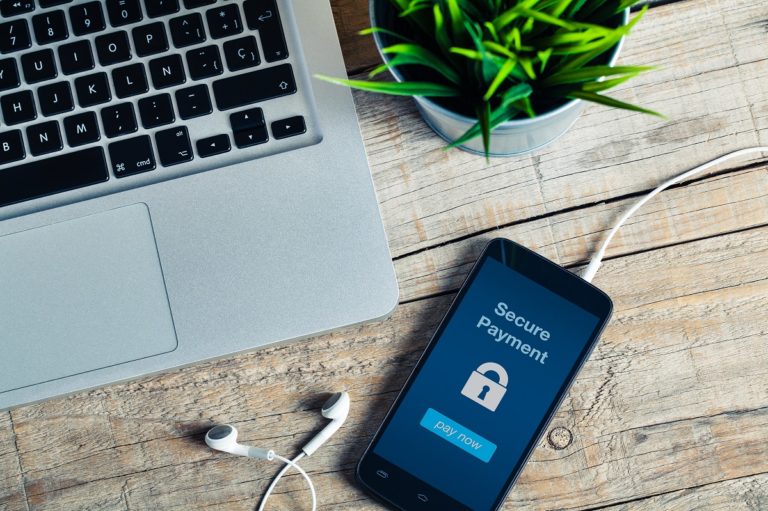- Implement secure network connections, access controls, and multi-factor authentication to protect data when working remotely.
- Utilize data encryption solutions and regularly monitor user activity logs to validate compliance requirements.
- Educate employees on cyber safety protocols such as password hygiene, email privacy, and identifying phishing emails or scams.
- Share updated internal risk strategy policies with employees regularly to create an alert workforce ready to handle cyber threats swiftly.
With more and more people working remotely due to the current pandemic, organizations must ensure their data remains secure. Without proper security protocols, companies risk suffering data breaches or other cyber-attacks.
Fortunately, there are steps businesses can take to protect their data while allowing employees to work from home. By implementing these measures, businesses can rest assured that their data will remain safe even in a remote work setup.
Implement Data Security Protocols
Here are some data security protocols you should implement to ensure data protection when working from home:
Use Secure Network Connections

Implementing secure network connections is essential to ensure that any data processed by a remote work setup remains private and secure. This involves using virtual private network (VPN) technology to create an encrypted connection between the corporate network, team members, and their remote devices. This encryption creates a barrier that prevents malicious actors from intercepting data.
It is critical for organizations to actively employ secure networking protocols like VPNs, as cybercriminals have become increasingly sophisticated with their methods of infiltrating insecure networks. Implementing a secure connection also allows control over access to shared information and prevents employees from bypassing security mechanisms when on the company’s remote network.
Implement Access Controls
Access controls are essential to ensure data protection for remote work setups. Access control policies and procedures limit which users can access a computer system, network, or document and set guidelines determining what activity is allowed. This prevents malicious attacks and unauthorized access while protecting confidential information. With the proliferation of virtual team collaboration, having a secure file transfer feature to share files with colleagues without risk to organization data is crucial.
A centralized authentication system provides powerful authentication methods such as two-factor authentication, dynamic passwords, and biometrics to ensure the safe transmission of documents between employees and partners. To properly implement effective access control strategies, organizations should continuously monitor their users’ activities and investigate potential threats for additional proactive security measures.
Set Up Multi-Factor Authentication
Multi-Factor Authentication (MFA) offers an additional layer of security in remote work setups that can help protect data. MFA adds another form of user identification, often using biometrics or a unique code to access different systems. This helps to generate a significantly stronger encryption algorithm and reduces the chances of malicious actors breaching company networks or accounts.
Implementing these practices will require companies to create an extra level of validation by texting or calling the employee’s phone before they can enter their password and gain access to sensitive data. In addition, having a properly trained team will ensure that everyone is aware of the importance of following MFA security policies with the utmost accuracy, reducing the risk of cyber-attacks and other protections in this new working environment.
Utilize Data Encryption Solutions

Data encryption solutions are important tools for businesses that are setting up a remote work setup to protect sensitive data while employees are working outside the office. By encrypting data with the help of various solutions, businesses can avoid malicious attacks by ensuring their data’s confidentiality, integrity, and availability.
The various levels of security offered by these solutions prevent hackers from obtaining access to confidential information, guarding it against interception and potential loss. Moreover, due to the importance of having secure networks in remote work setups, businesses should also consider implementing authentication procedures for all users with access to their systems. These steps are necessary in today’s digital landscape to keep confidential information safe from prying eyes.
Monitor User Activity Logs Regularly
Considering the changing workplace dynamics due to COVID-19 and other scenarios, monitoring user activity logs from remote locations is becoming increasingly important for data protection. User activity logging monitors user events such as file transfers and transactions, application access, or sessions initiated by a particular user.
It helps protect against unauthorized access to data and malicious activities related to accessing, modifying, or deleting information. Regularly monitoring these logs allows administrators to easily detect suspicious activities and take timely corrective measures to prevent major security incidents. This method also permits organizations to validate compliance requirements ensuring that sensitive data is managed securely.
Educate Employees on Cybersecurity Best Practices
As organizations adapt to the current remote work reality, effective and comprehensive employee education on cybersecurity best practices can be the differentiating factor in preventing data leaks and security breaches. Educating employees on cyber safety protocols should involve timely refresher courses covering important basics, such as password hygiene, email privacy, identifying phishing emails/scams, and regularly sharing updated internal risk strategy policies.
Additionally, simulations and mock drills allow employees to practice responding to potential threat scenarios. This will create an alert workforce ready to handle cyber threats swiftly and inculcate stronger awareness across the organization about potential risks. Education on cybersecurity best practices is vital for any business wanting to protect its data and keep its operations secure.
These are just a few steps businesses can take to protect their data when working remotely. By taking proactive measures and utilizing the latest technologies, organizations can ensure that their data remains secure, no matter where their employees are.

















